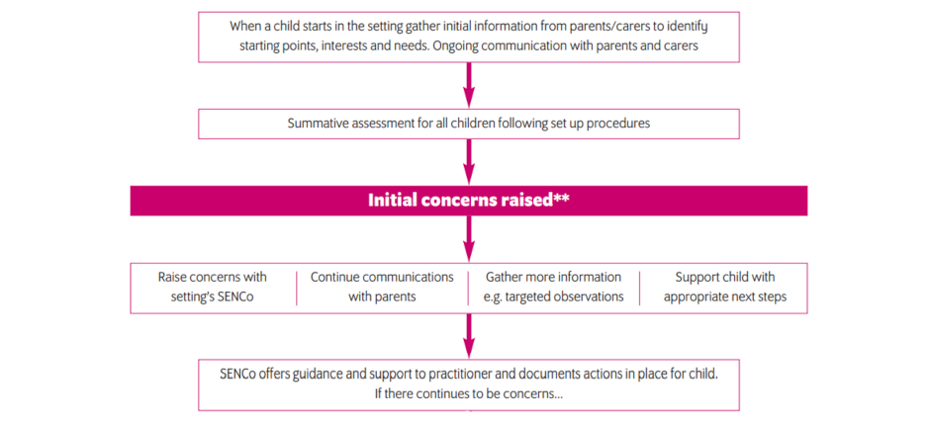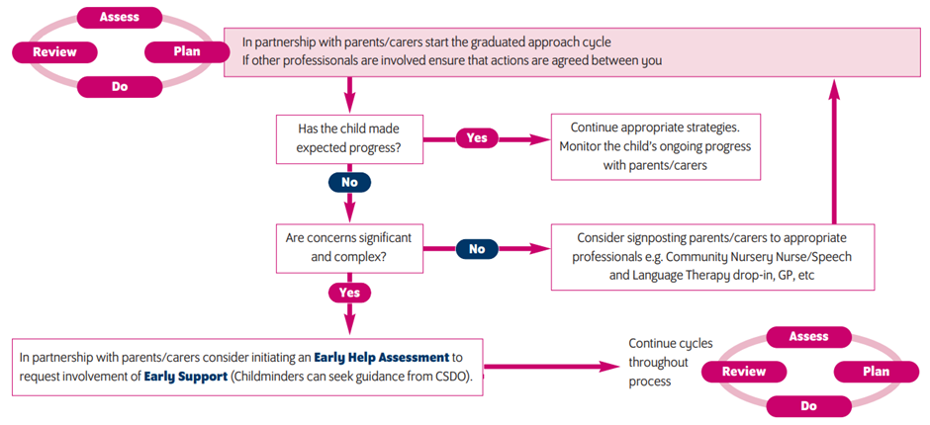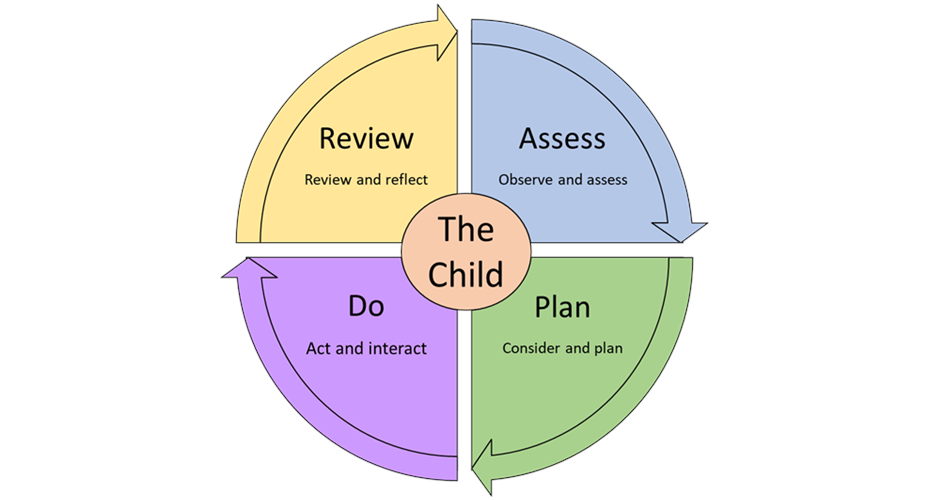
Emerging Needs
This page gives an overview of SEND support processes every setting should have in place to support children and families.
SEND Code of Practice 5.4
‘Providers must have arrangements in place to support children with SEN or disabilities. These arrangements should include a clear approach to identifying and responding to SEN.’
Identification of Emerging Needs
Actions for Key Person

Click for a larger version of image.
Actions for SENCo (in collaboration with Key Person)

Click for a larger version of image.
**Possible concerns
- Delayed Development in the Prime areas through EYFS summative assessment.
- Concerns relating to specific difficulties e.g., hearing, speech, and physical skills.
- Developmental assessment is not as expected e.g., splintered, patchy or shows regression.
- Significant concerns about behaviour.
Graduated Approach to SEND
Support for children with emerging needs or SEND should be through the graduated approach. This is a four-part cycle leading to a growing understanding of the child’s needs. It supports practitioners to identify the actions that need to be put in place to ensure the best outcomes for the child.
The graduated approach (Assess, Plan, Do, Review) should be time limited but can be variable in length, dependent on the stage of the identification and level of need e.g., 6 weekly, half termly, or termly etc.

Click for a larger version of image.

